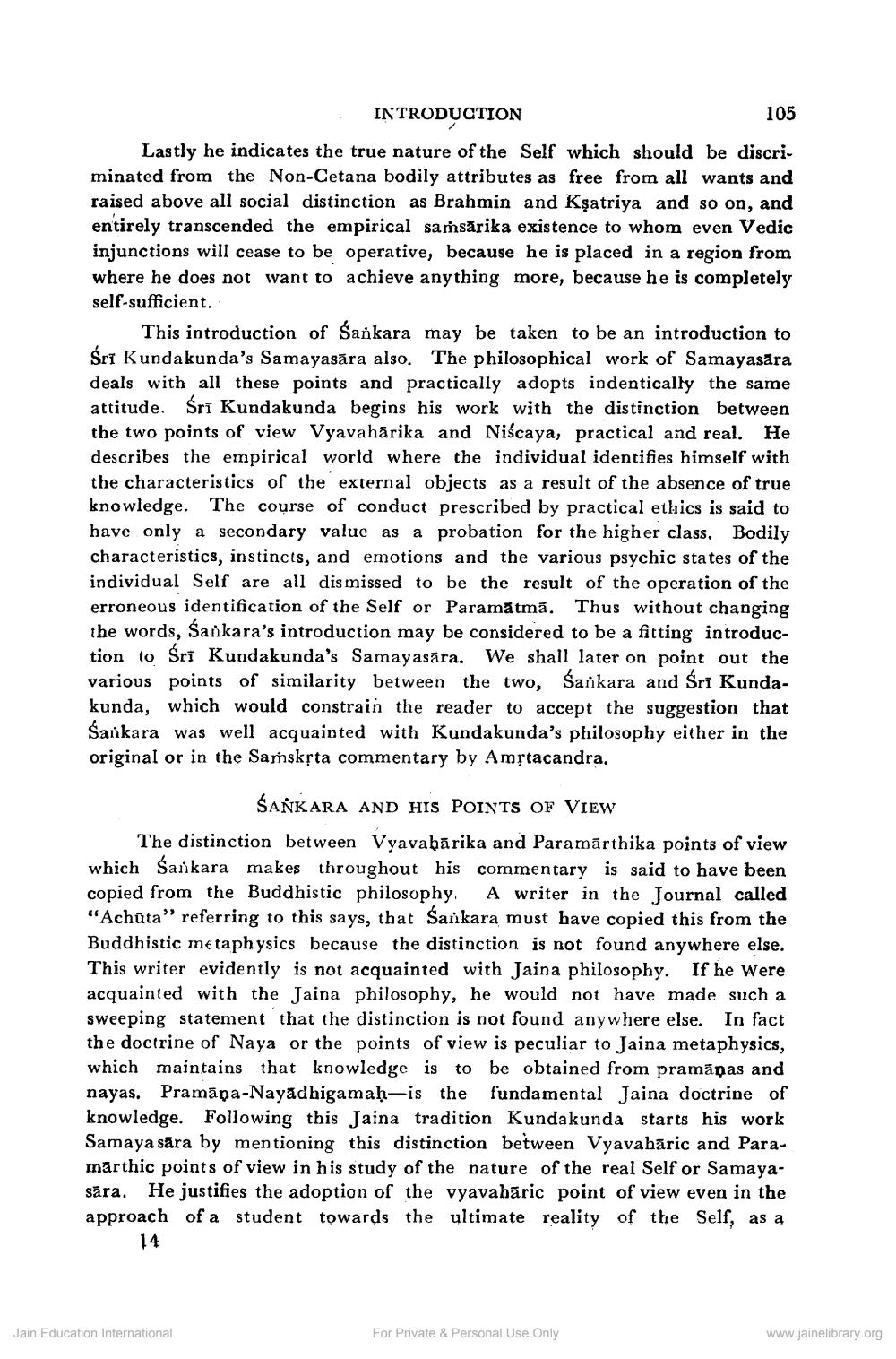________________
INTRODUCTION
105 Lastly he indicates the true nature of the Self which should be discriminated from the Non-Cetana bodily attributes as free from all wants and raised above all social distinction as Brahmin and Kşatriya and so on, and entirely transcended the empirical samsărika existence to whom even Vedic injunctions will cease to be operative, because he is placed in a region from where he does not want to achieve anything more, because he is completely self-sufficient.
This introduction of Sankara may be taken to be an introduction to Śri Kundakunda's Samayasāra also. The philosophical work of Samayasara deals with all these points and practically adopts indentically the same attitude. Śrī Kundakunda begins his work with the distinction between the two points of view Vyavahărika and Niscaya, practical and real. He describes the empirical world where the individual identifies himself with the characteristics of the external objects as a result of the absence of true knowledge. The course of conduct prescribed by practical ethics is said to have only a secondary value as a probation for the higher class. Bodily characteristics, instincts, and emotions and the various psychic states of the individual Self are all dismissed to be the result of the operation of the erroneous identification of the Self or Paramātmā. Thus without changing the words, Sankara's introduction may be considered to be a fitting introduction to Sri Kundakunda's Samayasara. We shall later on point out the various points of similarity between the two, Sarkara and Sri Kundakunda, which would constrain the reader to accept the suggestion that Śarikara was well acquainted with Kundakunda's philosophy either in the original or in the Samsksta commentary by Amộtacandra.
ŚANKARA AND HIS POINTS OF VIEW The distinction between Vyavabā rika and Paramarthika points of view which Sankara makes throughout his commentary is said to have been copied from the Buddhistic philosophy. A writer in the Journal called "Achūta" referring to this says, that Sankara must have copied this from the Buddhistic metaphysics because the distinction is not found anywhere else. This writer evidently is not acquainted with Jaina philosophy. If he were acquainted with the Jaina philosophy, he would not have made such a sweeping statement that the distinction is not found anywhere else. In fact the doctrine of Naya or the points of view is peculiar to Jaina metaphysics, which maintains that knowledge is to be obtained from pramāpas and nayas. Pramāna-Nayadhigamaḥ-is the fundamental Jaina doctrine of knowledge. Following this Jaina tradition Kundakunda starts his work Samaya sāra by mentioning this distinction between Vyavahāric and Paramärthic points of view in his study of the nature of the real Self or Samayasāra. He justifies the adoption of the vyavabāric point of view even in the approach of a student towards the ultimate reality of the Self, as a
Jain Education International
For Private & Personal Use Only
www.jainelibrary.org




